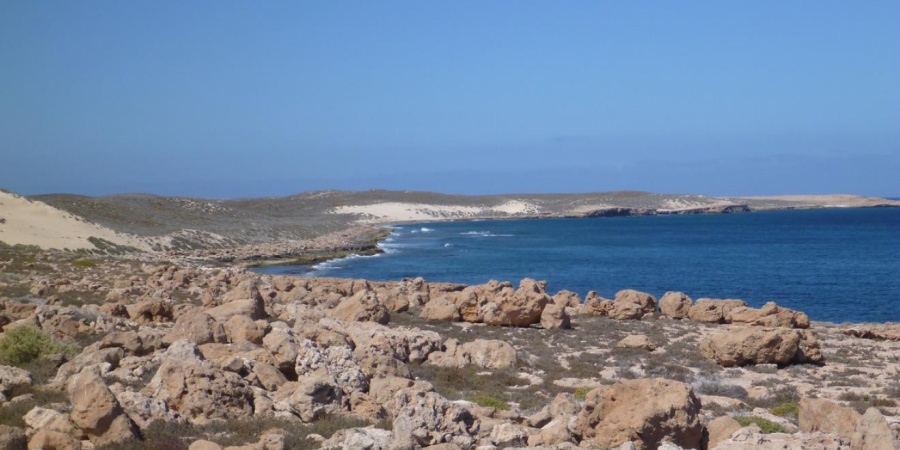
- Remotely piloted aircraft used to monitor radio-collared hare-wallabies
- Scientists can now track multiple animals from the air instead of just one at a time on the ground
- Part of the ground-breaking Return to 1616 ecological restoration program.
In a West Australian first, drones are being used to track endangered wildlife that has been reintroduced to Dirk Hartog Island National Park in the last two years.
Scientists can now track multiple animals in real time from the air as compared to only one animal at a time when tracking manually on the ground.
The drones also mean scientists can more quickly and safely search difficult terrain and large areas.
In 2017 a small population of banded and rufous hare-wallabies was reintroduced to the island under the Return to 1616 ecological restoration program.
Last year the Department of Biodiversity, Conservation and Attractions (DBCA) introduced another 140 hare-wallabies from nearby Bernier and Dorre Islands and fitted them with radio collars to assess survivorship and movement.
They were monitored daily for 12 weeks using traditional on-ground tracking, but it proved time consuming and labour intensive.
Recent data collected using the drones suggests the reintroduction program has been a success.
Once recaptured, the wallabies have had their collars removed and all have appeared to be in good condition. All females have either had joeys in their pouch or at-foot.
The restoration project is funded by the Gorgon Barrow Island Net Conservation Benefits Fund and DBCA.
Comments attributed to Environment Minister Stephen Dawson:
"The use of drones is an absolute game changer for conservation in remote parts of WA.
"By monitoring multiple mammals simultaneously, scientists on Dirk Hartog Island can work more quickly and efficiently to help measure the success of reintroducing endangered wildlife.
"This gives them more time to focus their efforts on the Return to 1616 ecological restoration program, which has already eradicated the island's feral cats, sheep and goats.
"The national park is now a refuge for some of our most iconic threatened species such as woylies, dibblers, chuditch, boodies, and banded and rufous hare-wallabies.
"Twenty-eight wallaby offspring have been recorded since the first wallabies were released onto the island in 2017, which is welcome news."